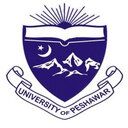Pharmacologically active flavonoids from the anticancer, antioxidant and antimicrobial extracts of Cassia angustifolia Vahl.
Keywords
Abstract
BACKGROUND
Cassia angustifolia Vahl. (commonly known as senna makkai or cassia senna), native to Saudi Arabia, Egypt, Yemen and also extensively cultivated in Pakistan, is a medicinal herb used traditionally to cure number of diseases like liver diseases, constipation, typhoid, cholera etc. This study was conducted to evaluate the in-vitro antimicrobial, antioxidant and anticancer assays and phytochemical constituents of aqueous and organic extracts of C. angustifolia leaves.
METHODS
The antimicrobial activities of C. angustifolia aqueous and organic (methanol, ethanol, acetone, ethyl acetate) extracts were investigated by the disk diffusion method. These extracts were further evaluated for antioxidant potential by the DPPH radical scavenging assay. Anticancer activities of the extracts were determined by the MTT colorimetric assay. The total phenolic and flavonoid contents of C. angustifolia extracts were evaluated by the Folin-Ciocalteu method and aluminum chloride colorimetric assay, respectively. The structures of the bioactive compounds were elucidated by NMR and ESI-MS spectrometry.
RESULTS
Bioactivity-guided screening of C. angustifolia extracts, led to the isolation and identification of three flavonoids quercimeritrin (1), scutellarein (2), and rutin (3) reported for the first time from this plant, showed significant anticancer activity against MCF-7 (IC50, 4.0 μg/μL), HeLa (IC50, 5.45 μg/μL), Hep2 (IC50, 7.28 μg/μL) and low cytotoxicity against HCEC (IC50, 21.09 μg/μL). Significant antioxidant activity was observed with IC50 2.41 μg/mL against DPPH radical. Moreover, C. angustifolia extracts have the potential to inhibit microbial growth of E. cloacae, P. aeruginosa, S. mercescens and S. typhi.
CONCLUSIONS
C. angustifolia extracts revealed the presence of quercimeritrin (1), scutellarein (2), and rutin (3), all known to have useful bioactivities including antimicrobial, antioxidant and anticancer activities.




